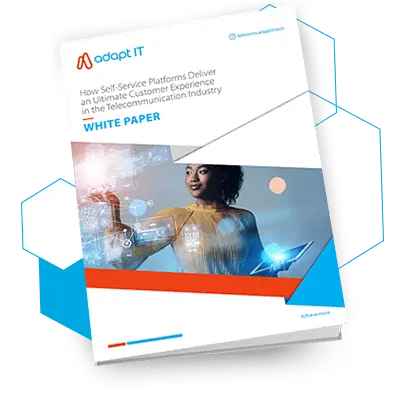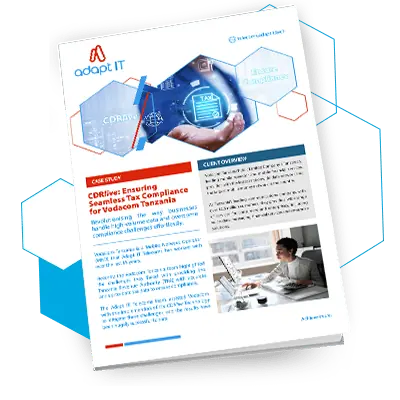Many businesses are looking to migrate to the cloud, which is primarily due to the ability of this innovative technology to improve and streamline business efficiency, processes, and operations. But to get the most out of your cloud computing investment, you need to understand what the different cloud computing models are, how they can be used, and what benefit or impact they will have on your business. Three main categories of cloud computing services exist: Infrastructure-as-a-Service (IaaS), Platform-as-a-Service (PaaS), and Software-as-a-Service (SaaS), each with varying degrees of management support.
Table of Contents
ToggleCloud Computing Models
In a recent article, we unpacked the value of cloud computing and how this is revolutionising the way businesses are operating and performing. Cloud computing refers to different types of hosted services that are delivered through networks that offer businesses enhanced flexibility, versatility, and cost savings especially where application and infrastructure deployment are concerned. The evolution of cloud computing has seen several different models being developed, we outline three of these below.and examine how these can be used by Telcos to answer the changing needs of customers.
Software-as-a-Service (SaaS)
SaaS is the most popular and widely used cloud computing software. The software or applications are hosted in the cloud where users can access them via a web browser, a dedicated desktop client, or an API (Application Program Interface) that integrates with a desktop or mobile operating system. This service is generally managed by a third-party vendor and is often paid for monthly or on a pay as you go system, which is perfect for smaller companies.
SaaS Model Characteristics:
- The third-party provider hosts the applications in one central location
- Services are hosted on a remote server
- All hardware and software updates are managed by the cloud provider
- With SaaS products, end-users only need a computer with an internet connection and web browsers to access applications
Benefits of SaaS applications:
- Reduces the need for IT Staff as the cloud provider handles all installing, managing, and upgrading software
- This service allows for the easy maintenance and deployment of different business applications especially for projects that need quick, easy, and affordable collaboration on the short-term
- SaaS facilitates accessibility as it allows multiple users to gain access to databases at anywhere and anytime as long as there is an internet connection
- Cost-effective and affordable as you only pay for what you need
- Data is backed-up and easy to recover as all data storage is in the cloud
Challenges of the SaaS model:
- SaaS apps are not designed to follow open standards for integration which means that integrating them with existing applications and services is a challenge
- Many are concerned with the security of data as large volumes of data have to be exchanged to backend data centres which could pose a security risk
- This model provides less control as all elements are handled by a third-party provider
- This model offers minimal customisation capabilities, as there are standard features and functionality.
SaaS is an excellent model for smaller businesses that are looking to launch e-commerce projects quickly, use apps off and on, work on short-term projects that require collaboration, and for applications that require both web and mobile access. Popular examples of SaaS applications include Dropbox, Salesforce, SAP Concur, Google Workspace, and more.
Platform-as-a-Service (PaaS)
PaaS is primarily a cloud environment that supports web application development and deployment. This platform provides the hardware, software, infrastructure, and development tools for running, developing, and managing applications without the complexity and cost that comes with maintaining an on-premises platform. In this case, a cloud provider hosts all related servers, networks, storage, operating systems, middleware, and databases.
PaaS Model Characteristics:
- The virtualisation technology that this model is built on allows for enhanced scalability
- This model allows for a variety of services that facilitate the development, testing, and deployment of applications
- Numerous users can access the same application
- Effectively integrates web services and databases
- The PaaS provider builds the environment and platform for users to run and install their apps
Benefits of PaaS applications:
- This is a cost-effective and easy model to use for app development and deployment
- Performance and efficiency are enhanced as developers don’t need to worry about hardware and software but about the actual application development and deployment.
- Multiple developers can work on an application from different locations
- Different tools and services are available and accessible to developers throughout the platform that enhances the speed, design, and development of apps
- The most significant benefits relating to the use of this model include improved output and performance, scalability, and reduced costs.
Challenges of the PaaS model:
- The integration of legacy systems on the PaaS platforms often present issues
- PaaS solutions are often not optimised for different languages and frameworks which create runtime issues
- There are data security concerns as the data resided in a cloud providers cloud server which pose security risks
The PaaS model is versatile and has a variety of capabilities which include, the development or extension of new programming interfaces (APIs), the analysis and management of business data, database automation, and more.
Infrastructure-as-a-Service (IaaS)
IaaS is the most open-ended cloud service providing access to physical and virtual services as well as networking and storage over the internet, anywhere, and at any time. This service is scalable as it provides extra capacity that can be accessed on-demand depending on a business’s short or long-term needs. This is generally a self-service platform that users access through a dashboard or an API (Application Program Interface).
IaaS Model Characteristics:
- Clients have complete control over their infrastructure, applications, operating systems, middleware, and data
- Provides the same capabilities as a traditional data centre without the complexity of having to manage it
- IaaS service providers manage the servers, hard drives, networking, virtualisation, and storage
- Enhanced ability to cope with large workloads
- This model is compatible with business intelligence tools
Benefits of IaaS applications:
- This model offers on-demand scalability allowing you to easily upgrade or downgrade services depending on your business needs
- Offers excellent reliability as IaaS providers ensure that the system’s workload is spread across multiple data centres and servers, which means that all of your computing resources, hardware, and apps are always available.
- This platform is cost-effective as you do not need to buy, setup, or manage new and expensive hardware and are only charged per consumption.
Challenges of the IaaS model:
- The infrastructure may not support legacy operating systems making integration difficult.
- Even though control of apps, data, middleware, etc. lies with you as a customer, you are still open to security risks and threats related to unauthorised access to the provider’s infrastructure
The IaaS model is excellent for larger companies who want to purchase only what they consume or need and who want complete control over their applications and infrastructure. The scalability and flexibility of this model also make this perfect for companies experiencing increased growth.
IaaS vs SaaS vs PaaS
| IaaS | SaaS | PaaS | |
| Description | Cloud Infrastructure Services | Cloud Application Services | Cloud Platform Services |
| What the cloud service provider manages | Virtualisation Storage Networking Servers |
Virtualisation Storage Networking Servers Runtime Middleware Operating Systems Applications Data |
Virtualisation Storage Networking Servers Runtime Middleware Operating System |
| What the client manages on their side | Applications Data Runtime Middleware Operating systems |
Applications Data |
Software |
How are IaaS, PaaS, SaaS services being used by Telcos
These three different cloud computing models offer several benefits for businesses, but what opportunity do these models provide Telcos? The answer lies in the role cloud services play on the Internet of Things (IoT). IoT is opening a world of opportunity for Telcos to create new revenue streams through the addition of value-added services.
The IaaS, PaaS and SaaS models mentioned above facilitate the creation of these offerings and services which give operators new ways of differentiating themselves in the market. Some of the applications of these models for the telecoms industry include:
- The development of data package sales models using IaaS
- SIM card management services and customer-facing services using PaaS
- The development of an AEP to integrate CaaS capabilities with third-party capabilities using PaaS. These capabilities would be open to developers through cloud APIs. Open these capabilities to developers through cloud APIs.
- The building of all-purpose industry suite solutions designed around common industry requirements using SaaS
- The provision of connectivity pulse devices and upper-layer application platforms using SaaS
By using this technology, Telcos can provide new and innovative service offerings to their audiences and enhance profitability and customer experience.
Conclusion
Cloud computing and the utilisation of IaaS, PaaS and SaaS models are changing the way businesses are operating by enhancing operational efficiency, collaboration, and performance. These models offer both large and smaller business opportunities to migrate to the cloud with varying levels of support and assistance from cloud providers.
The versatility, flexibility and scalability of these models are what makes them an attractive option for businesses wanting to make the move to the cloud. But they also offer Telcos an ability to enhance their service offerings to better answer to the developing and changing needs of customers. This not only provides new revenue streams and gives a competitive edge but enhances customer experience. Cloud computing is revolutionising the business world, and Telcos need to look at this as an opportunity to adapt and enhance performance and profitability.

Effectively manage your IoT ecosystem with IoT Connectivity

As the Global Head of Marketing and Business Development with 20 years of experience, Agnieszka’s expertise lies in the practical implementation of digital and traditional marketing strategies for B2C and B2B companies. Through her long-term, client-focused, strategic approach, and branding experience, she continues to develop innovative marketing plans that yield significant results. Now working in the SaaS industry, she oversees a multitude of solutions within the telecommunications industry including Customer Experience & Self-service, VAS, NextGen, IoT, FinTech, and Advanced Analytics.






